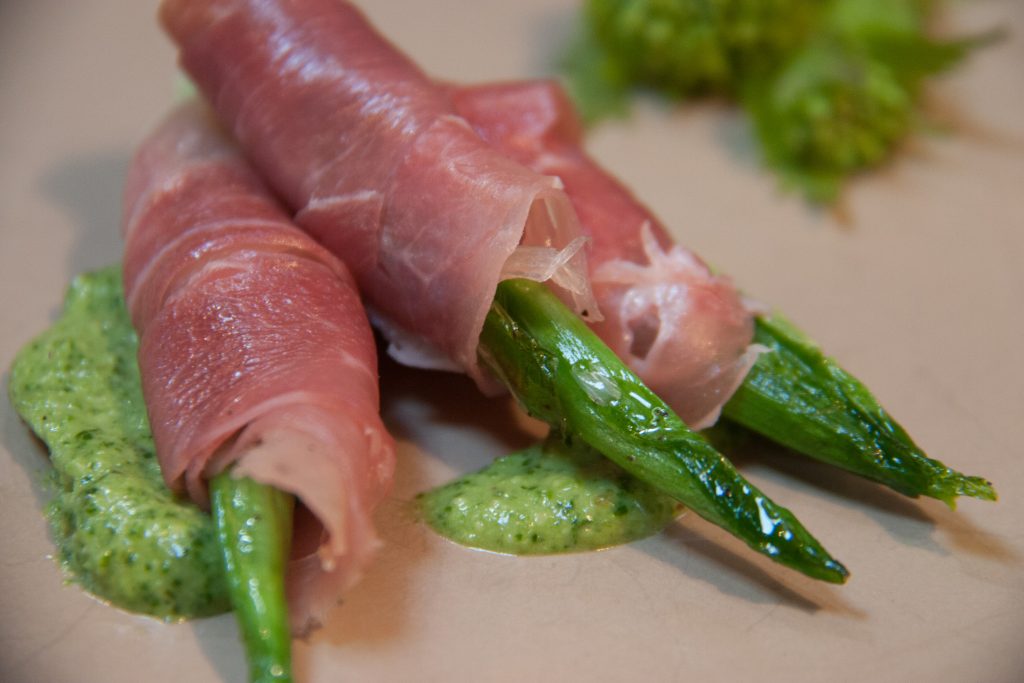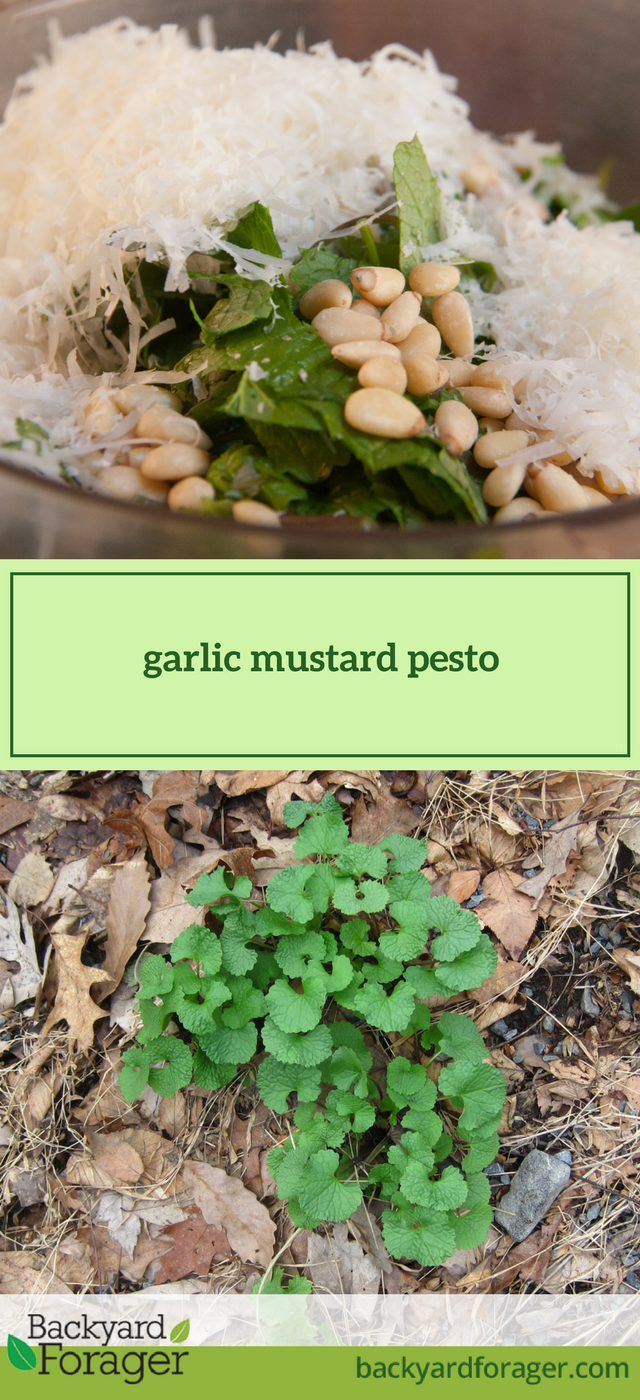
Garlic mustard pesto is a forager’s classic. Not only is it delicious, but the plant is so abundant and invasive that you can harvest to your heart’s content. Garlic mustard leaves take the place of both garlic and basil in this pesto recipe. It comes together in a flash and you can use it several ways: tossed with rice or pasta, as a filling for homemade ravioli or tortellini, or as a soup base (as in the French soupe au pistou).
Most people harvest garlic mustard in early spring when the leaves are tender, but you can frequently forage for a second, tender harvest in fall, when the seeds from early summer flowers have germinated. Older leaves can be fibrous and overly bitter.
You have several choices for the cheeses and nuts in this recipe. The important thing is that the cheese should have a strong enough flavor to stand up to the garlic mustard. For those of you with nut allergies, roasted pepitas make a good substitute for the traditional pine nut.
What You’ll Need to Make Garlic Mustard Pesto
- 4 cups chopped, tender, young garlic mustard leaves
- 1/2 cup grated Parmesan cheese (or Romano or Asiago)
- 1/2 cup pine nuts (or walnuts, or pepitas)
- 1/4 cup olive oil
- 1 Tablespoon preserved lemon (or 1 Tablespoon lemon juice)
What You’ll Do to Make Garlic Mustard Pesto
Wash and dry your garlic mustard leaves and give them a rough chop.
Add the garlic mustard, cheese, your nut of choice, and the olive oil to your food processor. Pulse until the texture is smooth but still grainy.
You’ll want to add something acidic to brighten the flavor. I use chopped preserved lemon, but lemon juice works just as well. Add your lemon, then pulse again until the pesto is smooth.
This pesto freezes beautifully and since garlic mustard is so plentiful, I freeze multiple one-cup containers to use throughout the year. And yes, I add the cheese before freezing. Some people don’t (although I’m not sure why), but I find this method works well.

I’m curious about when it is too late to harvest garlic mustard. Buds are up in my area and some plants are flowering. Am I too late?
You might be too late for the leaves. Taste one and see if you like the flavor. They don’t become toxic, just a little more bitter. But the buds and flowers are also edible, so you’re not too late!
when do you cook pesto?
You don’t! This is a sauce that doesn’t require cooking, although if you want to stir it into soup or use it to stuff ravioli, it also tastes great cooked.
I have read that the leaves of “mature” plants contain cyanide (!), and that it is important to blanch them in order to reduce toxicity. This was a surprise and is disappointing, but this is what I will do when preparing the pesto for which I removed garlic mustard yesterday. I’m not sure what constitutes “mature”, but assume that if they are flowering and starting to form seeds, this may qualify. If you know more, please share! Thank you.
I have never heard or read that. Most plant sources of cyanide are the inner kernels of stone fruits, not leaves. I’m curious and would like to research this further. Would you please share your source(s)?
I found this reference to cyanide in garlic mustard – the page references the sources but I am only posting the initial page here:
https://www.eattheweeds.com/garlic-mustard-jack-by-the-hedge-sauce-alone/
Please don’t be alarmed about this. Cyanide occurs naturally in many things we eat (radishes, bamboo shoots, almonds, spinach, and sweet potatoes, to name a few) and the very article you site also clearly states that the amount of cyanide found in garlic mustard is minimal and not a threat to humans. The human body is capable of processing small amounts of cyanide without harm, and garlic mustard falls into the “small amounts” category. Btw, if you’ve ever chewed on an apple seed by mistake, you’ve eaten cyanide.